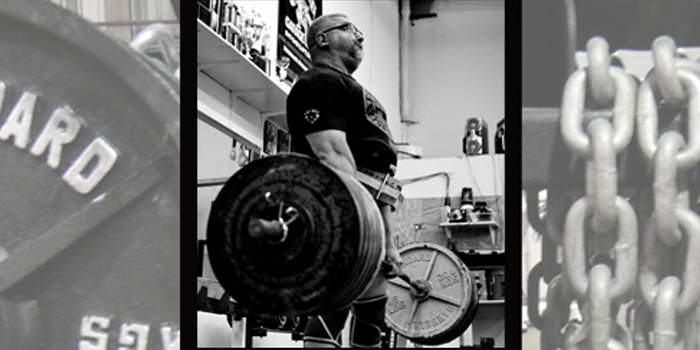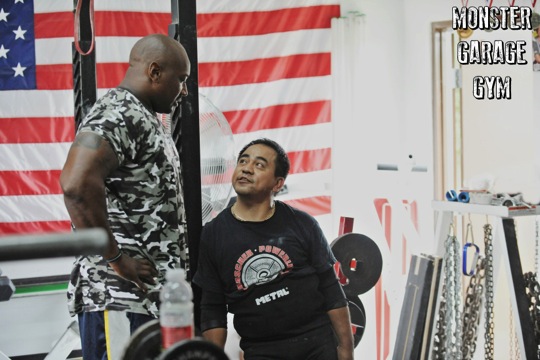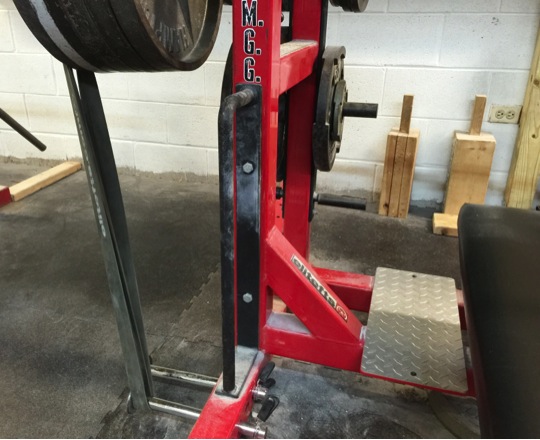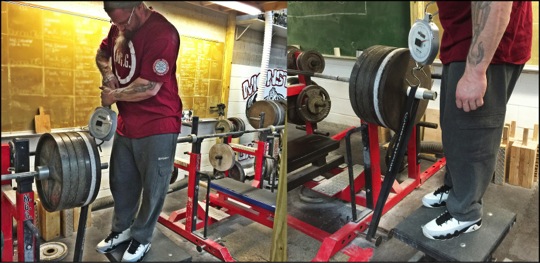
We get a lot—and I mean a lot—of use out of our chains and bands at the Monster Garage Gym (MGG) because with some 30 powerlifters at one gym, there is always someone utilizing some form of accommodating resistance. Some lifters will use average bands for the squat, three sets of chains for the deadlift or 50 percent chains with 50 percent weight off the box. You name it and they lift it.
At the end of each set, the lifters either log their numbers in their training log or into their cell phones (I'm not a fan of the cell phone log, but that's an article for another time). When the lifters enter their numbers, they are meticulous with their numbers and typically add comments as to how the lift felt as well as other nuances about the set or rep. If the lift was a squat, they comment on whether the squat was deep enough. If the lift was the bench press, they comment on whether there was a pause or something else relevant. So the sets and reps are accurate, and the comments reflect the mental affect of the lifter. For those into their nutrition numbers, of which we have a bunch, every gram of protein, fat and carbohydrate is accounted for accurately.
It's when it comes to logging the chain weight and band tension that things get a little tricky...
Why are the lifters so vague/inaccurate when it comes to pounds of band tension or the amount of chain weight? Truth be told, a chain weighs what a chain weighs, but the variation comes with the lifter. The same goes for band tension. The bands are pretty uniform in tension, meaning an average band stretched to four feet is the same band tension as the average band stretched out four feet on the other barbell sleeve of that barbell.
The big variation is the size of the lifter. For example, variation occurs when MGG co-founder Phillip Daniels trains with strong bands on the monolift and his partner for the day is APF National powerlifting champion Dr. Al. Both are using the same bar, weights and monolift, but when Phil, who is six feet, six inches tall, locks out his squat versus Dr. Al, who is five feet, three inches, Phil has considerably more band tension. So although Phil weighs more, they are lifting vastly different amounts of weight at the top. For each lifter to accurately log his own band tension weight at the top, he needs to account for the distance from the start of that band to its end point around the barbell sleeve. With chains, this means how much chain is off the floor versus on the floor.
MGG co-founder Phillip Daniels, who is six feet, six inches tall, with APF National Powerlifting Champion Dr. Al, who is five feet, three inches tall. Photo courtesy of Eric Espada/hailmagazine.com.
As they say, there is a tool for every job. At MGG, when it comes to measuring band tension and the amount of weight with the chains that was actually lifted, that tool is a Big Game scale.
MGG’s Big Game scale used to weigh out band tension and chain weight. Photo by Monster Garage Gym.
The scale is very easy to use, and the price for most of these types of scales in analog is under $30. They come in digital as well (for a little more accuracy) for about twice the price, which is still a bargain for the use you will get out of it.
Not dissimilar to my article about measuring bar height, powerlifting requires a lot of specificity. The scale gives you that because if you are truly using bands and chains for your training in the way they should be used, this tool will make a big difference with regards to planning your training numbers on days when you use these types of resistance.
MGG’s elitefts™ deluxe bench press with weight and bands for accommodating resistance. Photo by Monster Garage Gym.
MGG lifter Shaun pulling the band just off the bar* (just enough to get the S hook under the band and read the tension) so that he knows how much total weight is at the top of his lockout. Photo by Monster Garage Gym.
*We use a little PVC pipe to put the bands on because it allows the band to last longer. The band won't rub on the weight, the PVC spins easier than the barbell sleeve and the PVC is smoother than the barbell sleeve on some bars. It's also easier to pull the PVC piece off, thus getting the band off, than trying to pull it off the bar, which also damages the band over time. If you like your bands perpendicular to the floor or if you're using a lot of plates, the PVC is used closer to the barbell end.
Be it the geared lifter or RAW lifter, knowing the accurate amount of chain or band tension at the top or at any part of the lift is critical for those lifters who are truly dialed into their training program. For some other handy tips, check out "Top 10 Meet Day Tips for the Competitive Lifter."















1 Comment